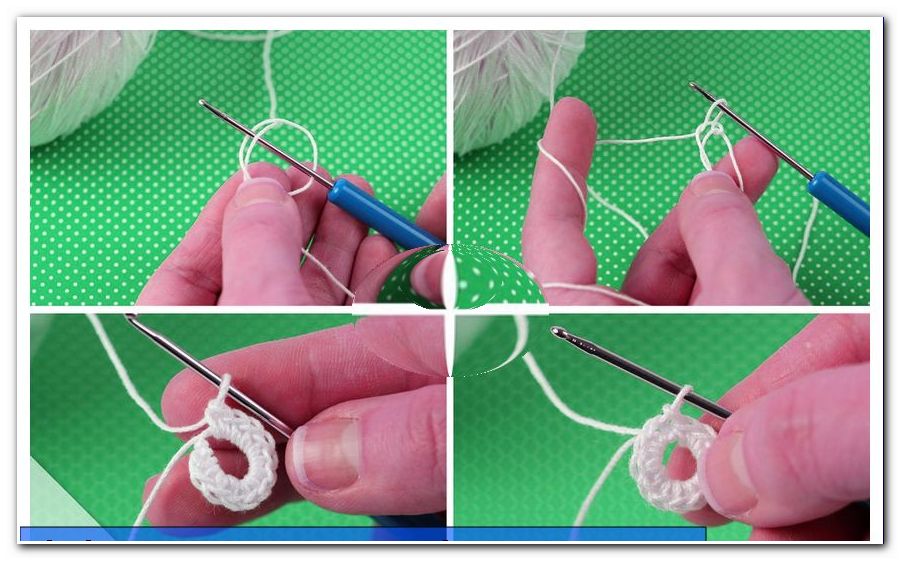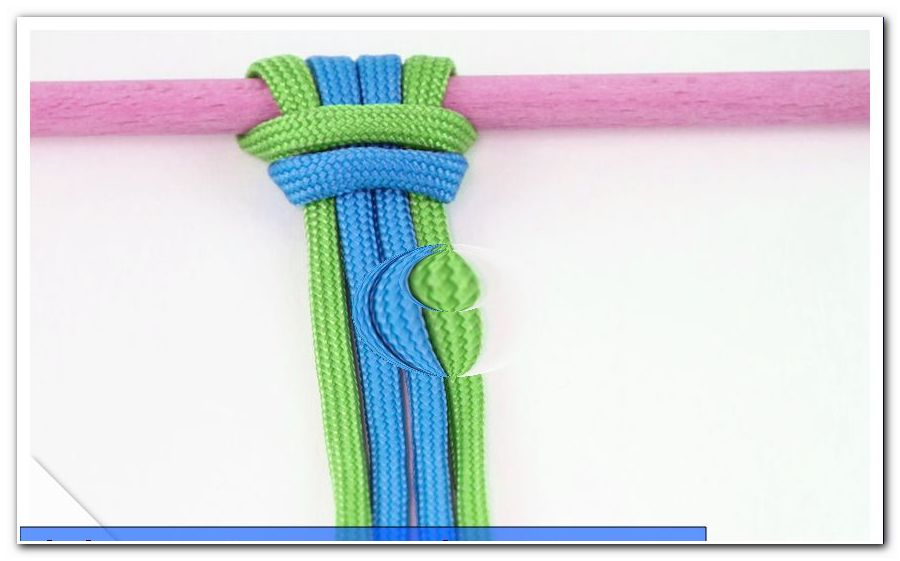Learn how to knit - the basics guide for beginners

- materials
- Important basics
- Cast on stitches
- Knit left and right stitches
- Knit edge stitches
- Bind off the stitches
- Remove stitches
- Increase mesh
- Knit buttonhole
- Various knitting patterns
- knit socks
- Knitting for the baby
- Various knitting instructions
- Other knitting techniques
It all starts with a difficult start - but when you're knitting, this is a quick start. We guarantee that. With us you can learn how to knit - in this guide for beginners we show you all the important basics, patterns and individual knitting instructions for practicing. In this way you will become a knitter-pro from the bloody beginner!
To learn to knit means to be courageous and to face it - for many, the sight of knitting needles and a knotted ball of yarn is a horror. Once you have mastered a few basics, many aspects are almost self-explanatory.
The following overview offers a variety of guides that will help you to understand the world of knitting.
materials
Wool and needles
Of course - knitting needs wool and needles. For starters, it is sufficient to organize a double needle needling game. The strength of the needles depends on the thickness of the wool you want to process. The manufacturer of the wool indicates which needle size is needed - so you can not go wrong. In the beginning, we recommend that you practice knitting with thicker needles and thicker wool. These are easy to hold in your hands - perfect for the start. Furthermore, knitting with thick wool motivates, because the progress is faster to see.
Important basics
We start with the most important techniques that are essential for knitting:
Cast on stitches
Before you can start with the right knitting, the individual stitches must be struck on the needle play. For many beginners, this beginning is usually too much of a good thing and it is quickly given up. But with a little practice, you will succeed in stitching in no time.
The detailed instructions can be found here: attach stitches

Important: The more stitches you put on, the wider the piece of knitting becomes.
Knit left and right stitches
The left and right stiches are two sides of the same coin - as soon as you knit a left st, a right stitch appears on the back and vice versa. The knitting of these two stitches is the basis for many different patterns. Once you master these stitches, the world of knitting patterns is yours.
- Left stitches: horizontal loops
- Right stitches: shape of a V's
How to knit: Left stitches or right stitches

Note: Changing right and left stitches allows you to create endless patterns - even letters can be knit in this way.
Knit edge stitches
The first and last stitch of a row of knitting is called edge stitch. This can be knit in various ways, as:
- nodules edge
- Fixed edge
- Swiss border
- Kettrand
- seam edge
- Crossed edge
- structure edge
- English rib edge
Here you will find the detailed knitting instructions: knit edge stitches

Note: The type of edge stitching depends on the knit and its use - the edge of a scarf should be rather smooth and without holes, so you do not get tangled.
Bind off the stitches
Every piece of knit comes to an end sometime and has to be finished cleanly and loosened from the needlelock - for this you have to bind off the stitches. You can do this with both a knitting needle and a crochet hook. Here both methods are described in detail: Bind off the stitches

Note: For beginners, the decoupling with the crochet hook is ideal - with the crochet hook, the individual stitches are not easily lost.
Remove stitches
The knitting of straight scarves and scarves, you have it on someday, but what comes next "> remove stitches

Note: Meshes can be removed at the edge or in the knit. At the edge, the knit becomes narrower. By a decrease in mesh within the knit the width is reduced.
Increase mesh
To widen the knit one must increase stitches. A typical example of stitch gain is the knitting of sleeves - where the upper arm is wide and the wrist narrow. But even hats with waistband, which should run a little wider, meshes must be increased.

The detailed step by step instructions are here: stitches increase

Note: Increases can be made at the edge or in the middle of the knit - this opens up many possibilities for accents and variations in the pattern.
Knit buttonhole
Sooner or later, the knitting needs a buttonhole - like a sweater, a jacket or a bag. There are two options for knitted buttonholes:
- vertical buttonhole: the knit pattern is divided into two halves
- horizontal buttonhole: for this, stitches are chained in one row and then taken up again in the next row
This is how it's done: Knit buttonhole

Note: Plan each buttonhole in advance - it would be a shame if the cardigan can not be properly closed at the end because the buttonhole is in the wrong place.
Various knitting patterns
Now you know almost all the important basics of knitting - after learning these techniques the application follows. There are a variety of different patterns that you can try. A long, straight scarf with different pattern sections is the perfect way to get to know different techniques and variations:
- Knit half patent
- Wrong patent knit
- Knit lace pattern
- Knit moss pattern
- Knitting pimple pattern
- Knit ajour pattern
- Knit cable knit
- Knitting Norwegian pattern
- Knit owl pattern

knit socks
The classic knitting pattern is sock knitting. Anyone who wants to learn how to knit, can not ignore self-knit stockings. In the following we will show you how to knit certain sock-heels and how to deal with the right sock size:

Basics Guide
Before you think about patterns or sizes, you need a foundation. Practice knitting with a simple sock tutorial like this one: knit socks
Then you need the perfect size - whether for yourself, the spouse, the mother or your own child. These sockets tables contain all the important information: Socketables
Knitting boomerang heel
Furthermore, there are different variations for knitting heels: like the boomerang heel or the reinforced heel. In this detailed description we show you step by step how to do it: knit heels

Note: A reinforced heel is knit with the help of a Beilaufgarnes. Despite the extra thread, use the normal needle size - this way, the heel becomes firm and durable.
Stockings without heel
Did you know that you can also knit socks without a heel "> Stockings without a heel
Top grades
In addition to various ways to knit sock heels, you can also work the lace in different ways. Whether as a ribbon lace (with or without stitches), with shortened rows, long or short, wide or narrow - we show the different techniques: Knit socks tops

Note: Just as with the different heels, choosing a method depends on how you feel it - decide for yourself which option suits you best.
Knitting for the baby
You are a beginner and want to quickly knit a sense of achievement "> 
- Knitting baby socks
- Sock table for baby socks
- Knit baby shoes
- Knit baby sweaters
Various knitting instructions
Now you have the necessary tools - now you just have to use it! Here you will find a variety of different tutorials that provide a great way for both beginners and advanced to learn how to knit.
For the winter

- Knit scarf with patent pattern
- Knit cap
- Knit headband
- Knit children's hat
- Knit loop scarf
- Knit hooded scarf
- Knitting children's sweaters
- Knit tank top
- Knit poncho
- Knit arm warmers
- Knit leg cuffs
- Knit gloves
Accessories and decoration

- Knit egg warmer
- Knit basket
- Knit stole
- Knit a shawl
- Knit patchwork blanket
- Knit dog sweaters
- Knit triangular cloth
Other knitting techniques
Or are you interested in special techniques that go beyond knitting with a double needle play "> 
- Knit lace
- Knitting knitted fabric
- Knitting with knitting frame
- Armstricken
- finger knitting
- Sträkeln




